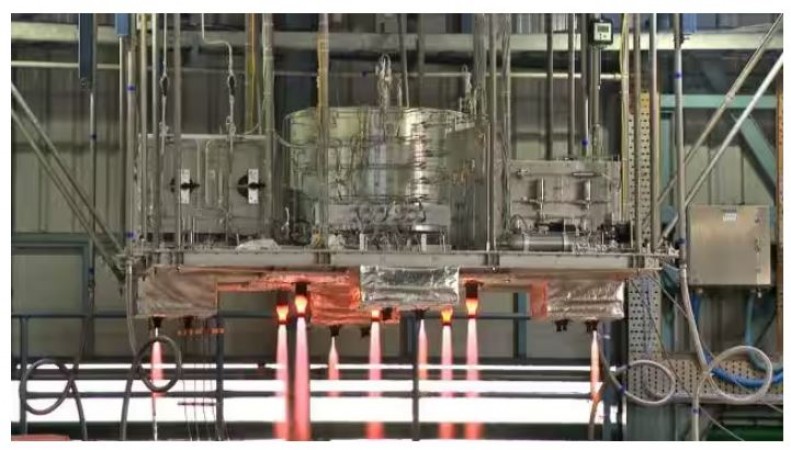
BANGALORE: In a significant achievement, the Indian Space Research Organisation (ISRO) accomplished two additional hot tests for the Gaganyaan Service Module Propulsion System (SMPS) at the ISRO Propulsion Complex (IPRC) in Mahendragiri on July 26.
The SMPS, a creation of the Liquid Propulsion System Centre (LPSC) located in Bengaluru and Valiamala, Thiruvananthapuram, underwent these tests.
These latest hot tests represent the second and third phases of the System Demonstration Model (SM-SDM) Phase 2 test series for the Service Module. The first hot test took place on July 19.
During the tests on July 26, the thrusters were operated in both continuous and pulse modes, following the mission profile.
According to ISRO, the initial hot test, which lasted 723.6 seconds, focused on demonstrating the Orbital Module injection and calibration burn of the 100 N thrusters and Liquid Apogee Motor (LAM) engines. This calibration burn was crucial to identify and isolate any non-operational engines. Fortunately, the LAM engines and reaction control system (RCS) thrusters performed exceptionally well.
The latter hot test, with a duration of 350 seconds, aimed to demonstrate the circularisation of the Orbital Module to achieve the final orbit.
In this test, the LAM engines operated in continuous mode, while the RCS thrusters fired in pulse mode.
Three additional hot tests are scheduled to showcase de-boosting requirements and off-nominal mission scenarios. These tests will further validate and refine the propulsion system's performance, ensuring its readiness for the upcoming Gaganyaan mission.
The Gaganyaan project aims to demonstrate India's human spaceflight capability by launching a three-member crew into a 400 km orbit for a three-day mission and safely bringing them back to Earth, with a landing in Indian sea waters. An important milestone in the Gaganyaan project is the first abort test, which ISRO plans to conduct in August.
Chandrayaan-3 Updates: ISRO Performs Final Earth Orbit-Raising Maneuver
ISRO to Launch PSLV-C56 with Singapore's DS-SAR Satellites on July 30